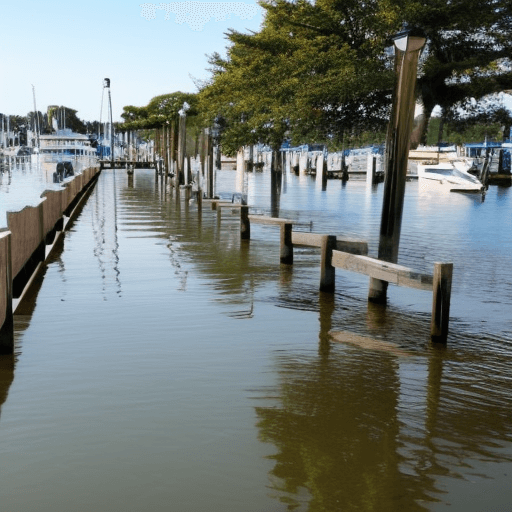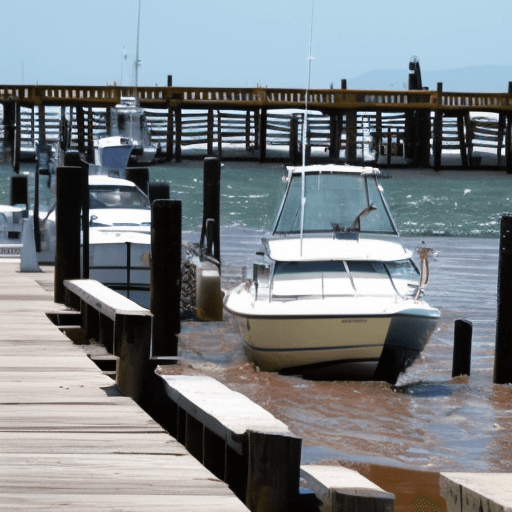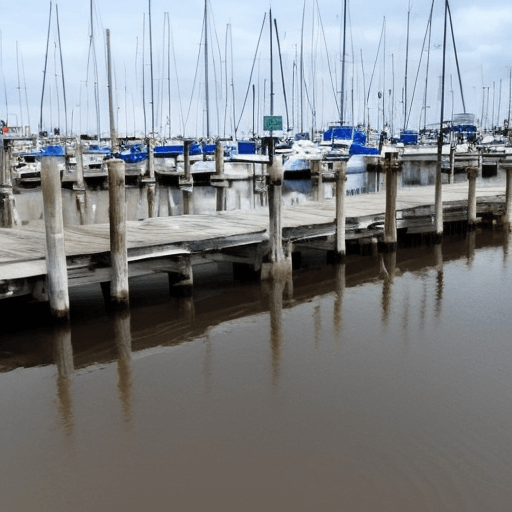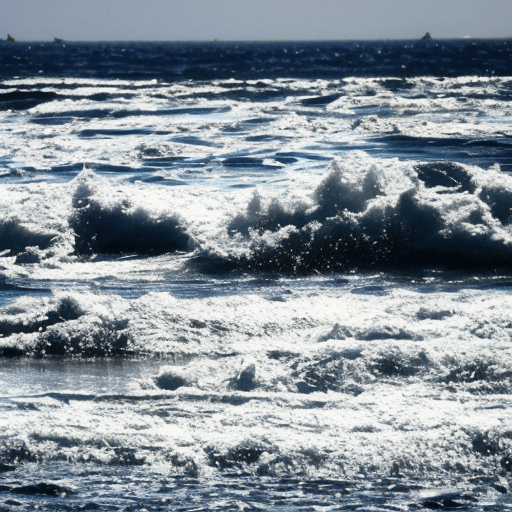How do lunar tides work?
How can the gravitational pull of the moon affect the water on Earth?
Doesn’t that seem crazy?

Today we’ll explore the science behind lunar tides and discuss how they are formed.
The moon exerts a gravitational force on the earth, which in turn creates a tidal force.
The lunar tide is responsible for oceanic tides, which are highest during the full and new moons.
During these phases, the variance in water level from low to high tide is greater than at any other time.
How do lunar tides work
Lunar tides are created by the gravitational pull of the moon on the earth.
As the moon orbits around the earth, its gravity affects the oceans, causing them to bulge out at a high tide.
At the same time, the earth’s gravity pulls on the moon, causing it to bulge out at a low tide. This back-and-forth pull creates a cycle of high and low tides that lasts for about 12 hours.
In addition to lunar tides, there are also solar tides, which are created by the sun’s gravity.
How lunar tides are formed
Lunar tides are formed when the gravitational pull of the moon and the sun interact with the Earth’s ocean waters.

The lunar tide is created when the moon’s gravity pulls on the Earth’s oceans, causing a bulge in the water.
The solar tide is created when the sun’s gravity pulls on the Earth’s oceans, causing a second bulge in the water.
These two bulges combine to form the lunar tide.
- The lunar tide has a greater effect on the Earth’s ocean waters than the solar tide.
- This is because the moon is closer to the Earth than the sun.
- The lunar tide also has a greater effect on the Earth’s ocean currents than the solar tide.
- This is because the moon’s gravity pulls on all of the Earth’s oceans, while the sun’s gravity only pulls on half of the Earth’s oceans.
How the gravitational force of the moon affects water on earth
The gravitational force of the moon affects water on earth in a number of ways. The most obvious is the phenomenon of lunar tides.

As the moon orbits around the earth, its gravity pulls on the oceans, causing them to bulge out slightly.
This tide is highest at the point in the moon’s orbit where it is closest to earth, and lowest at the point where it is furthest away.
The lunar gravitational force also affects groundwater, rivers, and lakes. As the moon’s gravity pulls on the water in these bodies, it creates a drag that can slow down the flow of the water and cause it to build up behind obstacles such as dams.
In addition, the lunar gravitational force can influence weather patterns by affecting air pressure and wind speeds. For example, low air pressure associated with lunar tides can cause strong winds and rough seas.
Ultimately, the gravitational force of the moon has a significant impact on the water on earth, both above and below ground.
What are the two components of the tidal force?
There are two components of the tidal force:
- The bulge created by the gravitation attraction of the orbiting body
- The centrifugal force created by the body’s rotation
The tidal force is responsible for the tides, which are the rise and fall of water levels in oceans and other bodies of water.

The gravitational component of the tidal force is caused by the difference in gravity between the near and far sides of the orbiting body.
The centrifugal component is caused by the body’s rotation, which creates a centrifugal force that opposes gravity. Together, these two components cause tides.
What creates the bulge in the ocean’s water level
The earth is covered with water, which creates the ocean’s bulge.
The bulge is created by the force of gravity.
Gravity is the force that pulls objects towards the center of the Earth.
The more mass an object has, the more gravity it has. The Earth has more mass than the water, so the water is pulled towards the center of the Earth. This creates a bulge in the water’s level.
The bulge is also affected by the moon’s gravity.
The moon’s gravity pulls on the water, further increasing the bulge.
- When the bulge is at its highest point, it is called high tide.
- When the bulge is at its lowest point, it is called low tide.
Tides are caused by the gravitational pull of both the sun and moon on the earth’s oceans.
The sun’s gravity is weaker than the moon’s, but it affects a larger area because it is so much closer to the earth.
The combined effect of the sun and moon’s gravity creates tides. Tides can be used to generate electricity or to pump water for irrigation purposes.
They can also be used to help prevent flooding by controlling how much water flows into an area.
How oceanic tides are highest during full and new moons
The tides are highest during the full and new moons and lowest during the first and third quarter moons.
This is because the gravitational pull of the sun and moon are at right angles to each other during these times.
When the sun, earth, and moon are lined up, the gravitational pull of the sun reinforces that of the moon, resulting in higher tides.
The first and third quarter moons occur when the sun and moon are at right angles to each other, causing their gravitational pulls to cancel each other out and produce lower tides.
The tides also vary in height depending on where you are on earth. For example, the tides are much higher on the east coast of the United States than on the west coast because of the shapes of the coastline and continental shelf.
The ocean’s tides play an important role in many coastal ecosystems by providing a source of food and nutrients for plants and animals and shaping shorelines.
Understanding how lunar tides work can help us make predictions about coastal flooding and allow us to take steps to protect against it.
Article Sources
Jacks of Science sources the most authoritative, trustworthy, and highly recognized institutions for our article research. Learn more about our Editorial Teams process and diligence in verifying the accuracy of every article we publish.
